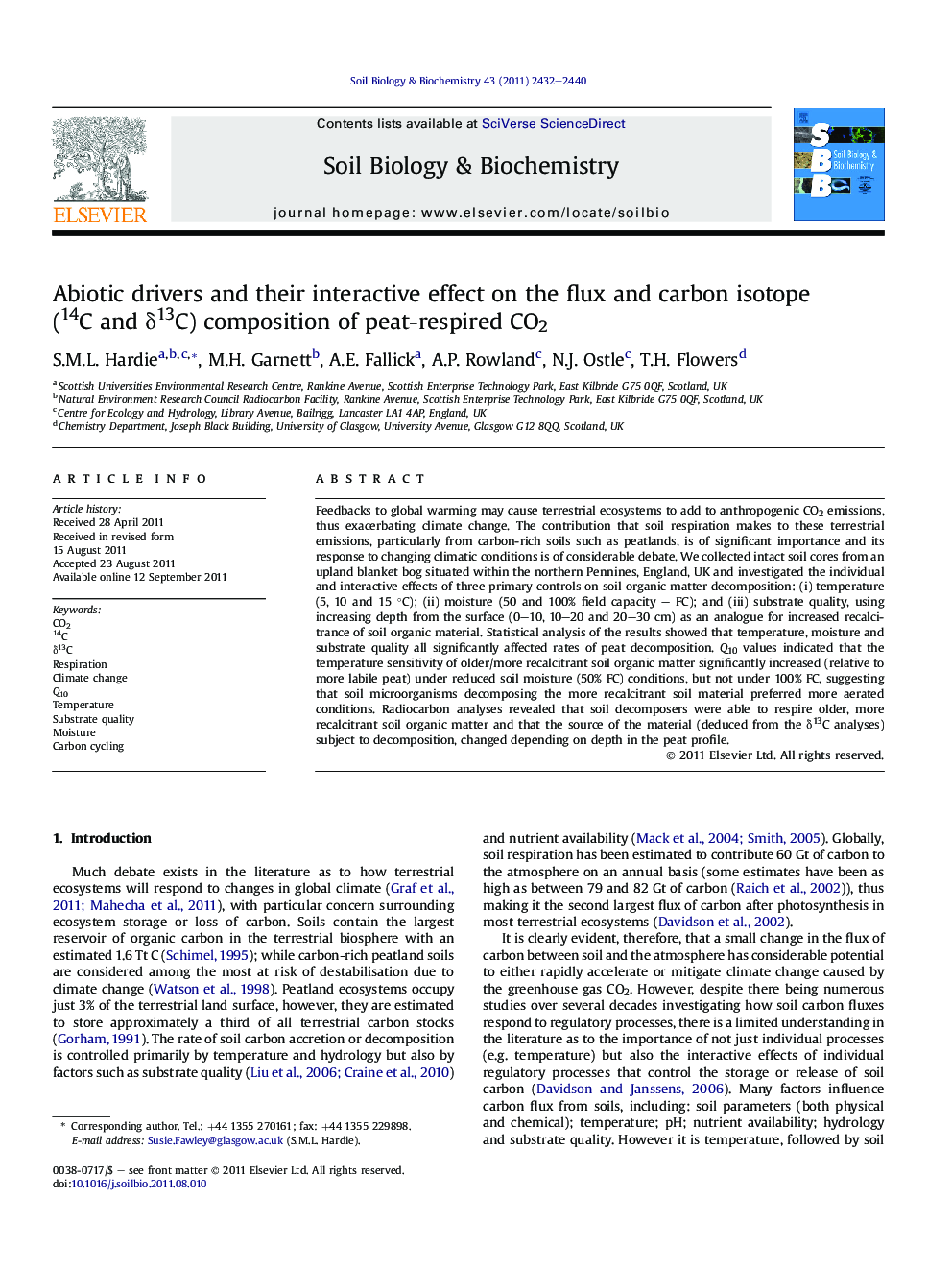| کد مقاله | کد نشریه | سال انتشار | مقاله انگلیسی | نسخه تمام متن |
|---|---|---|---|---|
| 2025167 | 1069984 | 2011 | 9 صفحه PDF | دانلود رایگان |

Feedbacks to global warming may cause terrestrial ecosystems to add to anthropogenic CO2 emissions, thus exacerbating climate change. The contribution that soil respiration makes to these terrestrial emissions, particularly from carbon-rich soils such as peatlands, is of significant importance and its response to changing climatic conditions is of considerable debate. We collected intact soil cores from an upland blanket bog situated within the northern Pennines, England, UK and investigated the individual and interactive effects of three primary controls on soil organic matter decomposition: (i) temperature (5, 10 and 15 °C); (ii) moisture (50 and 100% field capacity – FC); and (iii) substrate quality, using increasing depth from the surface (0–10, 10–20 and 20–30 cm) as an analogue for increased recalcitrance of soil organic material. Statistical analysis of the results showed that temperature, moisture and substrate quality all significantly affected rates of peat decomposition. Q10 values indicated that the temperature sensitivity of older/more recalcitrant soil organic matter significantly increased (relative to more labile peat) under reduced soil moisture (50% FC) conditions, but not under 100% FC, suggesting that soil microorganisms decomposing the more recalcitrant soil material preferred more aerated conditions. Radiocarbon analyses revealed that soil decomposers were able to respire older, more recalcitrant soil organic matter and that the source of the material (deduced from the δ13C analyses) subject to decomposition, changed depending on depth in the peat profile.
► Temperature, moisture and substrate quality increased soil respiration rates.
► Reduced soil moisture increased the temperature sensitivity of older SOM.
► Respired CO2 became more enriched in 13C with increasing depth from the surface.
► 14C content of respired CO2 showed that it was younger than the bulk peat.
Journal: Soil Biology and Biochemistry - Volume 43, Issue 12, December 2011, Pages 2432–2440